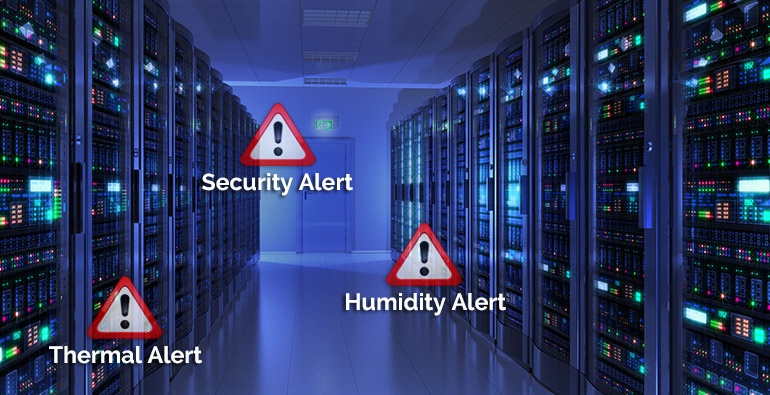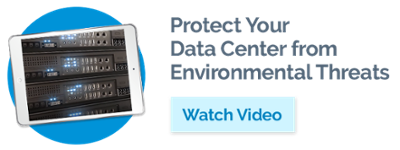
While data centers have become quite expansive, many companies still house all or most of their IT infrastructure on-site. Some businesses choose to run and maintain their server rooms to keep in-house control over data, software and hardware, rather than handing it over to a commercial data center. Data center monitoring, therefore, is imperative to protect assets against unexpected events and fluctuating operating conditions.
Businesses choose to maintain in-house data centers for many reasons. In addition to enabling IT personnel to decide when to modify or customize systems, an on-site infrastructure enables more efficient communications between tech personnel and company staff members who need support. It also provides a level of security where only designated personnel can access the server room. Having the IT team determine who, when and why someone can access the network or infrastructure helps some organizations meet internal and regulatory security requirements.
Monitoring Environmental Conditions
When servers are kept on the premises and not at a distant data center, a business’s dedicated IT staff must quickly respond to urgent incidents. While most data centers have systems to prevent and/or alert staff to hacking, viruses and data breaches, many infrastructures do not utilize data center monitoring to guard against environmental threats. Dangers like high heat, unregulated airflow, humidity, power fluctuation and water leaks can damage computer equipment and reduce company productivity.For example, hot data centers are less secure and reliable as extreme temperatures can affect applications and make chips run slower. ASHRAE recommends that data centers operate at temperatures between 64 and 80°F. Data center monitoring can ensure optimal temperatures and alert personnel when they rise or fall outside of set parameters.
Data Center Monitoring of Operations
Air conditioning systems, UPS systems and backup generators all need to be operating at peak efficiency to ensure that your servers and network gear continue to run without interruption. A data center monitoring system can monitor a variety of assets and conditions including:
- A down server
- An offline router
- HVAC failure
- Power outage
- Water leak
- High/low humidity
- High/low temperature
- Restricted airflow
- Unauthorized access
In the case of natural disasters, power outages or major equipment malfunctions, environmental monitoring systems give data center operators the chance to take immediate corrective action as soon as possible after the event. Detecting slow-growing environmental changes also helps IT staff establish corrective measures to prevent equipment problems from ever happening. For example, changing humidity levels can cause static electricity build up overtime and eventually damage equipment. Detecting nuances in operating conditions early can enable personnel to take corrective action to prevent future problems.
Monitoring On-Site Server Rooms
Businesses that choose to maintain IT hardware and related equipment in a dedicated area of their premises need an infrastructure monitoring system that provides mutifaceted functionality to track different operations within a server room.
The IMS-400 E Infrastructure Monitoring System from Sensaphone monitors conditions like temperature, humidity, line voltage, water leaks, server response, UPS system, smoke, sound level, motion, room access, airflow, and power outage. This web-based data monitoring system tracks critical environmental conditions across the entire infrastructure to identify potential problems before they become disasters.
Various sensors positioned throughout the data center constantly report their status to the monitoring unit. When a sensor detects a condition outside of set parameters, the host unit immediately sends an alarm, notifying designated personnel via phone call, email or SMS message. If the network goes down and these messages cannot be sent, the IMS phone line will activate its backup alarm.
In this era of remote working, employees must have the capability to connect to in-house servers to identify threats like water leaks, fire, power outages, unauthorized physical access, temperature fluctuations and humidity changes without being on the premises.
The IMS-400E Data Monitoring System can simultaneously monitor both the network environment (temperature, power, humidity, etc.) and TCP/IP devices (servers, routers, gateways, etc.)
The IMS-4000E Features
- A web-based user interface, to program, log data, and access data from any network-connected computer
- Responsive mobile interface to view host and node data from one screen on any smartphone, tablet, or computer
- Increased security
- Boosted processing power
Additional Data Center Monitoring Solutions
For server room operators looking to monitor sensors integrated into micro-controlled equipment, we offer the Stratus EMS Monitoring System that reads the values over Modbus RTU/485 and Modbus TCP. Using the Stratus EMS, you can monitor the status of devices like uninterruptible power supplies, net meters, protocol data units and HVAC systems.
Because the system is cloud-based, personnel can easily view the current operating condition of equipment and quickly modify sensor settings via the app. The Stratus EMS system sends instant alerts when values fall out of range—all without adding additional wiring and sensors. When paired with the proper sensors, the system can even provide a comprehensive view of power consumption in your server room.
To learn more about how a data center monitoring system can protect your critical centers from environmental threats, contact a Sensaphone expert today.








